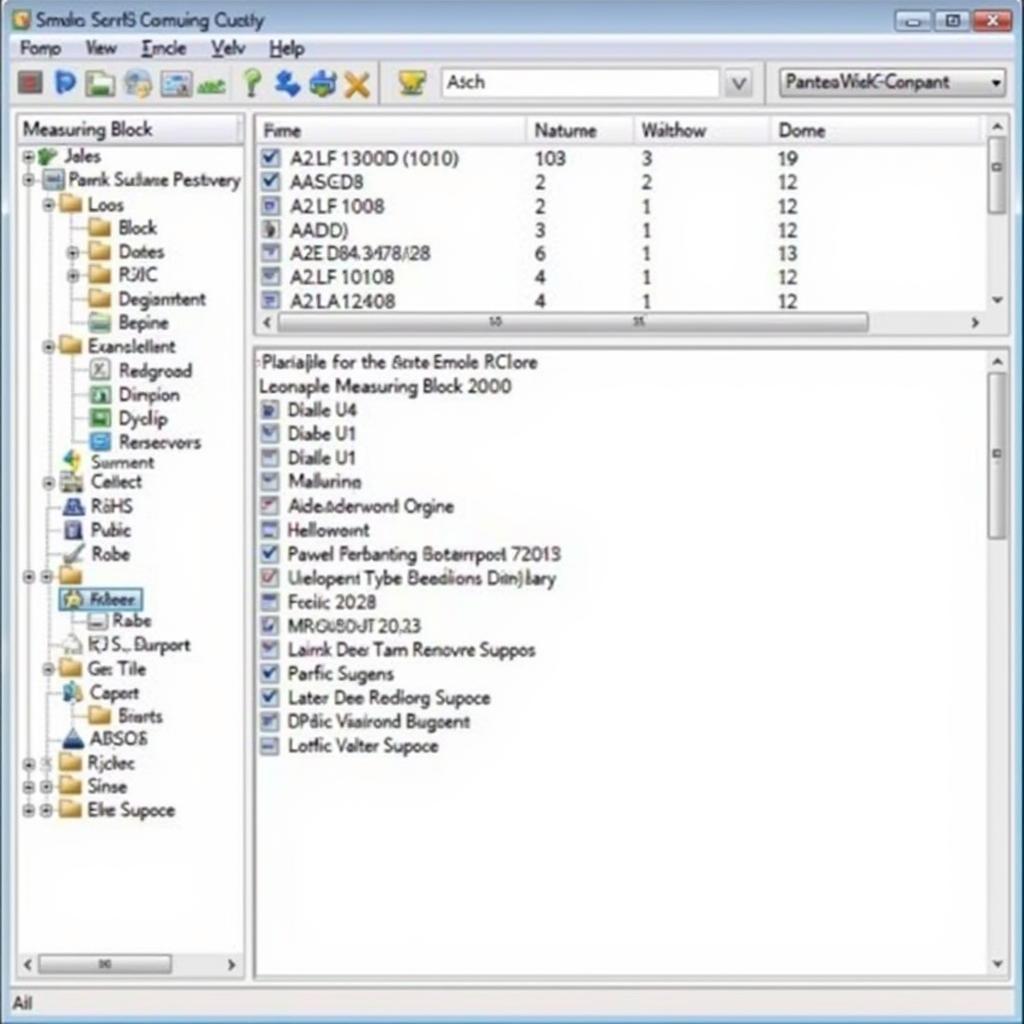Your cart is currently empty!

Mastering the VCDS Measuring Block List: Your Guide to Effective Vehicle Diagnostics
The VCDS measuring block list is a powerful tool for diagnosing vehicle issues. This guide provides comprehensive information on how to use VCDS measuring blocks effectively, offering practical advice for both DIY enthusiasts and professional technicians. Whether you’re troubleshooting a check engine light or performing advanced diagnostics, understanding the measuring block list is key to accurate and efficient repairs.
Understanding the Basics of VCDS Measuring Blocks
VCDS, or VAG-COM Diagnostic System, is a software package used to diagnose, code, and customize vehicles within the Volkswagen Auto Group (VAG). At the heart of its diagnostic capabilities lies the measuring block list. This list essentially provides real-time data streams from various sensors and control modules within the vehicle’s electronic systems. Think of it as a window into the inner workings of your car, allowing you to see exactly what’s going on under the hood.
What Can You Learn from the VCDS Measuring Block List?
The VCDS measuring block list offers a wealth of information, including:
- Sensor readings: Real-time data from various sensors, such as temperature, pressure, and speed sensors.
- Actuator status: Information on the position and operation of actuators like valves, solenoids, and motors.
- Control module status: Data on the functioning of various control modules, such as the engine control unit (ECU), transmission control module (TCM), and ABS module.
- Fault codes: Identification of specific fault codes and their associated descriptions.
 VCDS Measuring Blocks Dashboard
VCDS Measuring Blocks Dashboard
How to Access and Interpret VCDS Measuring Blocks
Accessing the measuring block list is straightforward:
- Connect your VCDS interface to the vehicle’s OBD-II port.
- Launch the VCDS software on your computer.
- Select the appropriate control module for the system you’re diagnosing.
- Navigate to the “Measuring Blocks” function.
Once in the measuring block list, you’ll see a table of data. Each row represents a specific measuring block, and each column displays a different parameter within that block. Interpreting this data requires understanding the specific measuring block groups and their corresponding values.
Finding the Right VCDS Measuring Block List for Your Vehicle
Different vehicle models and systems have different measuring block groups. Consulting the official VCDS documentation or reputable online resources can provide you with the correct measuring block numbers and their meanings. This is crucial for accurate diagnosis. For example, measuring block 001 in the engine control module might display engine speed, while measuring block 002 might display coolant temperature.
“Knowing which measuring blocks to look at is half the battle,” says John Miller, a seasoned automotive diagnostician with over 20 years of experience. “The other half is understanding what the data means in the context of the vehicle’s overall operation.”
Troubleshooting with the VCDS Measuring Block List: Real-World Applications
The VCDS measuring block list can be used to diagnose a wide range of issues. Here are a few examples:
- Misfires: Monitoring misfire counters in specific measuring blocks can pinpoint problematic cylinders.
- Fuel pressure issues: Observing fuel pressure readings can help identify failing fuel pumps or clogged fuel filters.
- Sensor malfunctions: Comparing actual sensor readings with expected values can reveal faulty sensors.
- Emissions problems: Analyzing oxygen sensor data and other emission-related parameters can pinpoint the cause of failed emissions tests.
“VCDS and its measuring block list have become indispensable tools in my workshop,” adds Sarah Johnson, owner of Johnson’s Auto Repair. “It saves me time and money by allowing me to quickly and accurately diagnose complex issues.”
Conclusion: Unleashing the Power of VCDS Measuring Blocks
The VCDS measuring block list is a powerful diagnostic tool for anyone working on VAG vehicles. By understanding how to access and interpret the data within these blocks, you can effectively troubleshoot a wide range of issues, from simple sensor problems to complex engine management faults. Mastering this feature is essential for efficient and accurate vehicle diagnostics. Contact us at +1 (641) 206-8880 and our email address: vcdstool@gmail.com or visit our office at 6719 W 70th Ave, Arvada, CO 80003, USA, or check out vcdstool for more information and assistance. We are happy to help you with your diagnostic needs!
by
Tags:
Leave a Reply